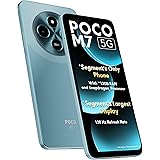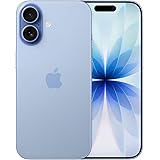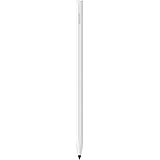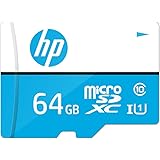It’s easy to mistake milia for whiteheads–small, pale bumps that crop up overnight, clustered under the eyes, on the cheeks or along the nose. But before you go shamelessly popping them, listen up. What looks like a mild breakout or whiteheads is a completely different kind of skin concern that won’t respond to your tried-and-true acne spot treatment, and definitely not to squeezing.
“Milia are tiny cysts that sit just under the skin’s surface,” explains cosmetic physician and head of education at Acquisition Aesthetics, Dr Emmaline Ashley. “They are full of a protein called keratin, which is commonly found in your hair, nails, and the outer layer of skin.” Milia presents itself as pearly-white bumps; however, they are not inflammatory, infectious or even remotely related to acne.
Whiteheads, on the other hand, are closed comedones are a type of acne lesion that is caused by clogged pores filled with sebum, dead skin and bacteria. “Milia, however, are firmer, deeper-set and won’t extract easily like a whitehead,” warns Dr Ashley.
What causes milia?
Our skin isn’t just a protective barrier. It’s a living, breathing organ that renews itself roughly every month. As part of this natural cycle, dead skin cells are meant to shed from the surface, making way for the fresh, healthy ones beneath. But sometimes, that process doesn’t go quite as planned, causing milia.
These tiny, pearly bumps form when dead skin cells and keratin become trapped beneath the surface, rather than exfoliating as they should. They most often appear around the eyes and cheeks, delicate areas where the skin is thinner, making them more susceptible to buildup.
“Clinically, milia are smooth, dome-shaped, and feel firm to the touch,” says Dr Ashley. “Unlike a whitehead, they don’t come to a ‘head,’ they’re not red or inflamed and they’re usually not tender or painful unless irritated.”
According to Dr Hussein Yassine, Board-Certified dermatologist and founder of Skin Expert Clinic in Beirut, milia is often found in newborns and in adults with dry or damaged skin and can be triggered by multiple factors, one of them being the use of occlusive ingredients or very thick, hydrating formulas, they contribute by disrupting natural exfoliation.
“A lot of people consider petroleum jelly, like Vaseline, to be a moisturiser, which it is not,” he explains. “Not to forget the use of mineral oils, lanolin, beeswax, paraffin, and other rich natural oils, as well as cocoa and shea butter.” Even ingredients like dimethicone, commonly found in makeup, can contribute to congestion when layered too heavily. Overusing rich eye creams, failing to properly remove makeup or relying on occlusive products in hot, humid climates can also create the perfect conditions for milia to form.
There’s also a lesser-known subtype known as traumatic milia that can occur after the skin experiences stress. Think resurfacing lasers or dermabrasion. In these cases, the skin’s natural healing process gets disrupted, trapping keratin beneath the surface as it tries to repair itself.
How to treat milia
In most cases, milia is harmless and tends to resolve on its own with time. But if it’s persistent—or simply bothersome from a cosmetic standpoint—experts recommend a combination of consistent at-home care and professional in-clinic treatments. “A skilled clinician can use a sterile needle to gently de-roof the lesion,” says Dr Ashley. “Cryotherapy, diathermy or even laser ablation can be suggested for more extensive cases.”
Source link
DJI Osmo Mobile 8 Gimbal Stabilizer for Phone, Native Tracking with Audio & Lighting, 360° Pan Rotation, Built-in Extension Rod & Tripod, 10h Battery, Extension Rod, Robust 3-Axis Stabilization
₹13,990.00 (as of December 21, 2025 00:00 GMT +05:30 - More infoProduct prices and availability are accurate as of the date/time indicated and are subject to change. Any price and availability information displayed on [relevant Amazon Site(s), as applicable] at the time of purchase will apply to the purchase of this product.)Lava Bold N1 5G (Champagne Gold, 4GB RAM, 64GB Storage) |Bigger 6.75" HD+ Notch Display | Octacore 5G Processor | 13 MP AI Camera |5000 mAh Battery| IP54 Rated Dust & Water Splash Proof
₹7,999.00 (as of December 21, 2025 00:00 GMT +05:30 - More infoProduct prices and availability are accurate as of the date/time indicated and are subject to change. Any price and availability information displayed on [relevant Amazon Site(s), as applicable] at the time of purchase will apply to the purchase of this product.)POCO M7 5G, Ocean Blue (8GB, 128GB)
₹10,299.00 (as of December 21, 2025 00:00 GMT +05:30 - More infoProduct prices and availability are accurate as of the date/time indicated and are subject to change. Any price and availability information displayed on [relevant Amazon Site(s), as applicable] at the time of purchase will apply to the purchase of this product.)iPhone 17 256 GB: 15.93 cm (6.3″) Display with Promotion, A19 Chip, Center Stage Front Camera for Smarter Group Selfies, Improved Scratch Resistance, All-Day Battery Life; Mist Blue
Now retrieving the price.
(as of December 21, 2025 00:00 GMT +05:30 - More infoProduct prices and availability are accurate as of the date/time indicated and are subject to change. Any price and availability information displayed on [relevant Amazon Site(s), as applicable] at the time of purchase will apply to the purchase of this product.)










